Answered step by step
Verified Expert Solution
Question
1 Approved Answer
What is the rotational kinetic energy of a solid sphere of mass 8.33 kg and radius 0.30 m if it is rotating about its

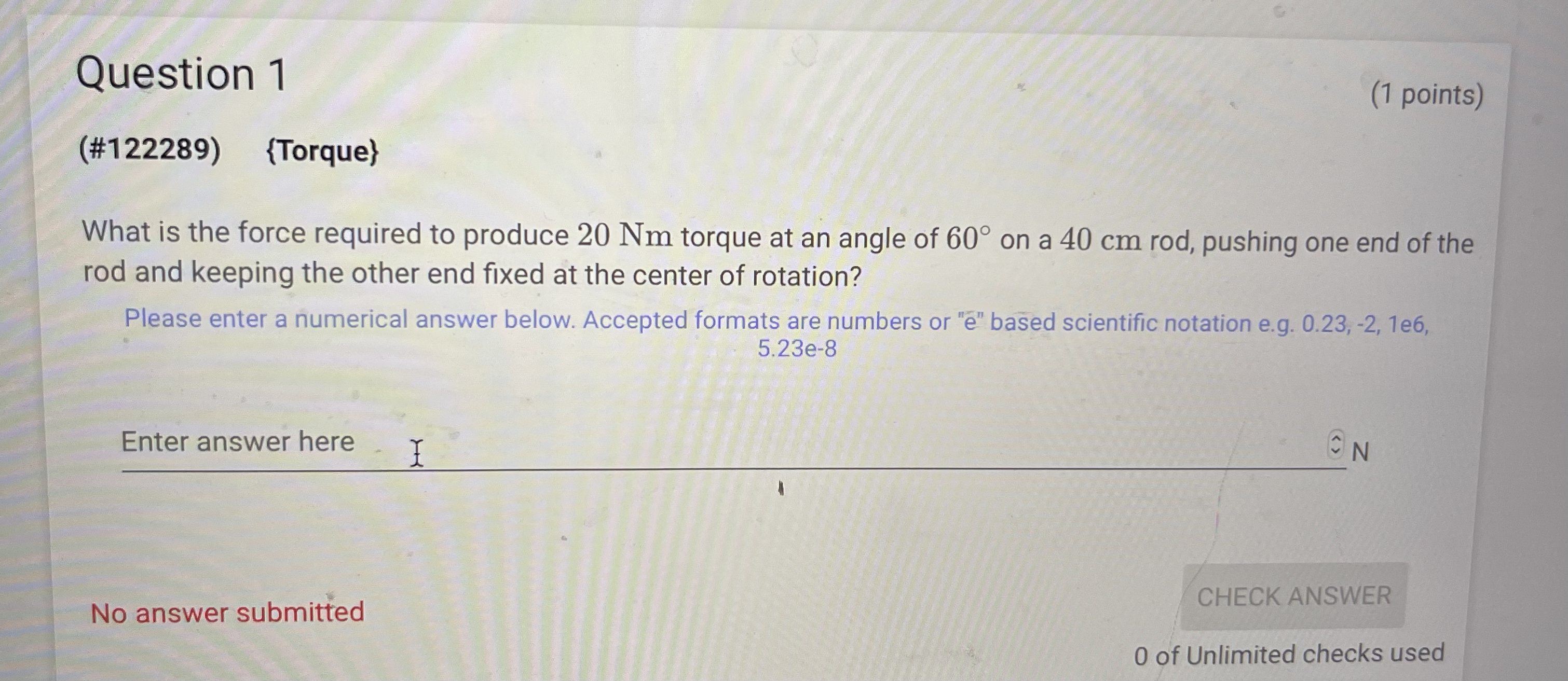
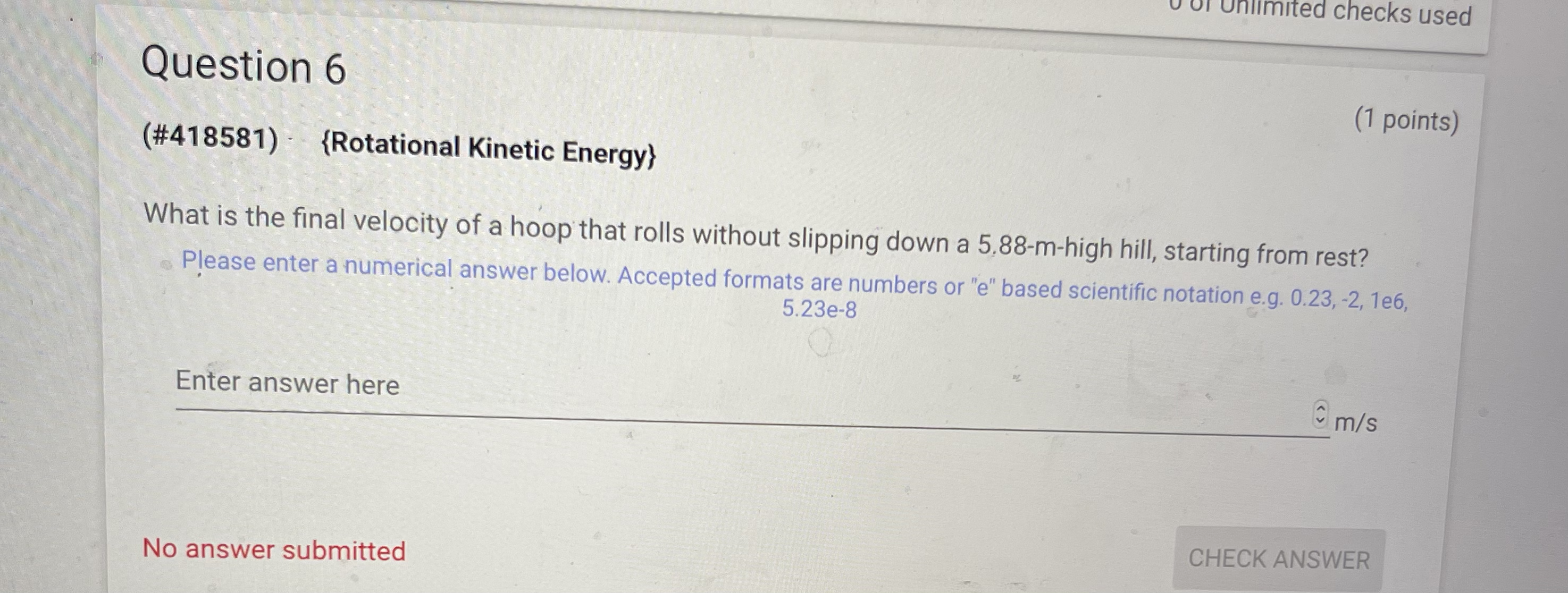
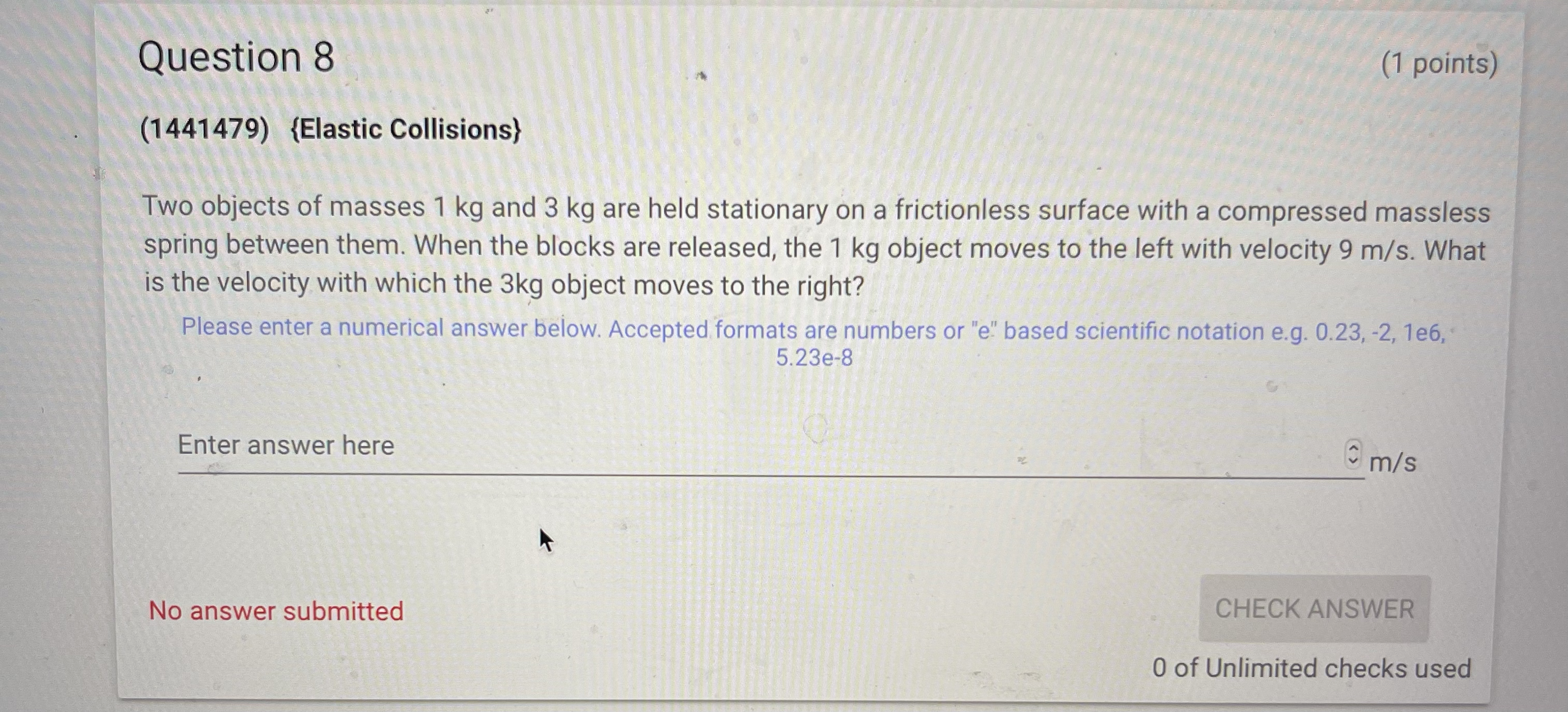
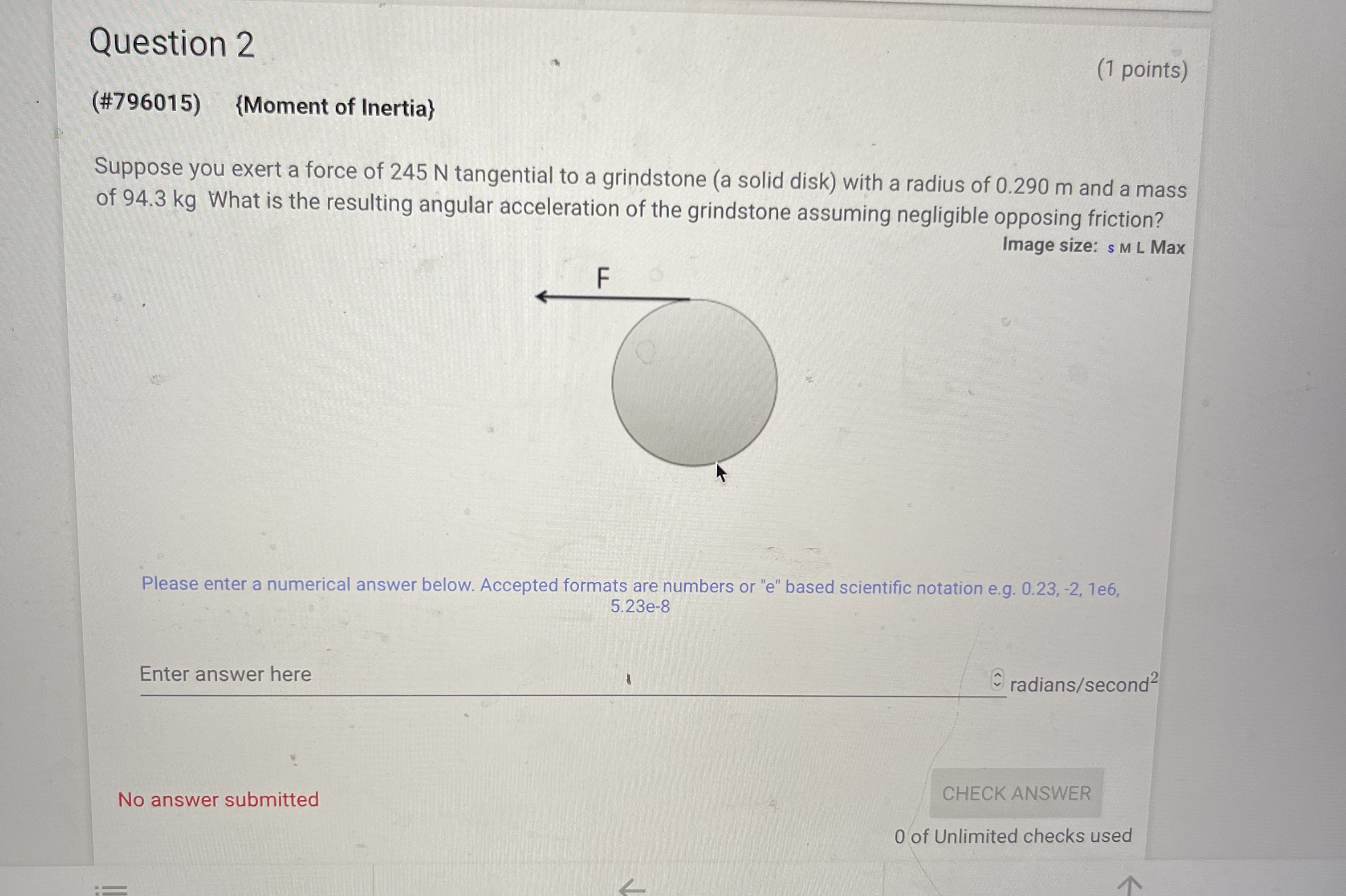


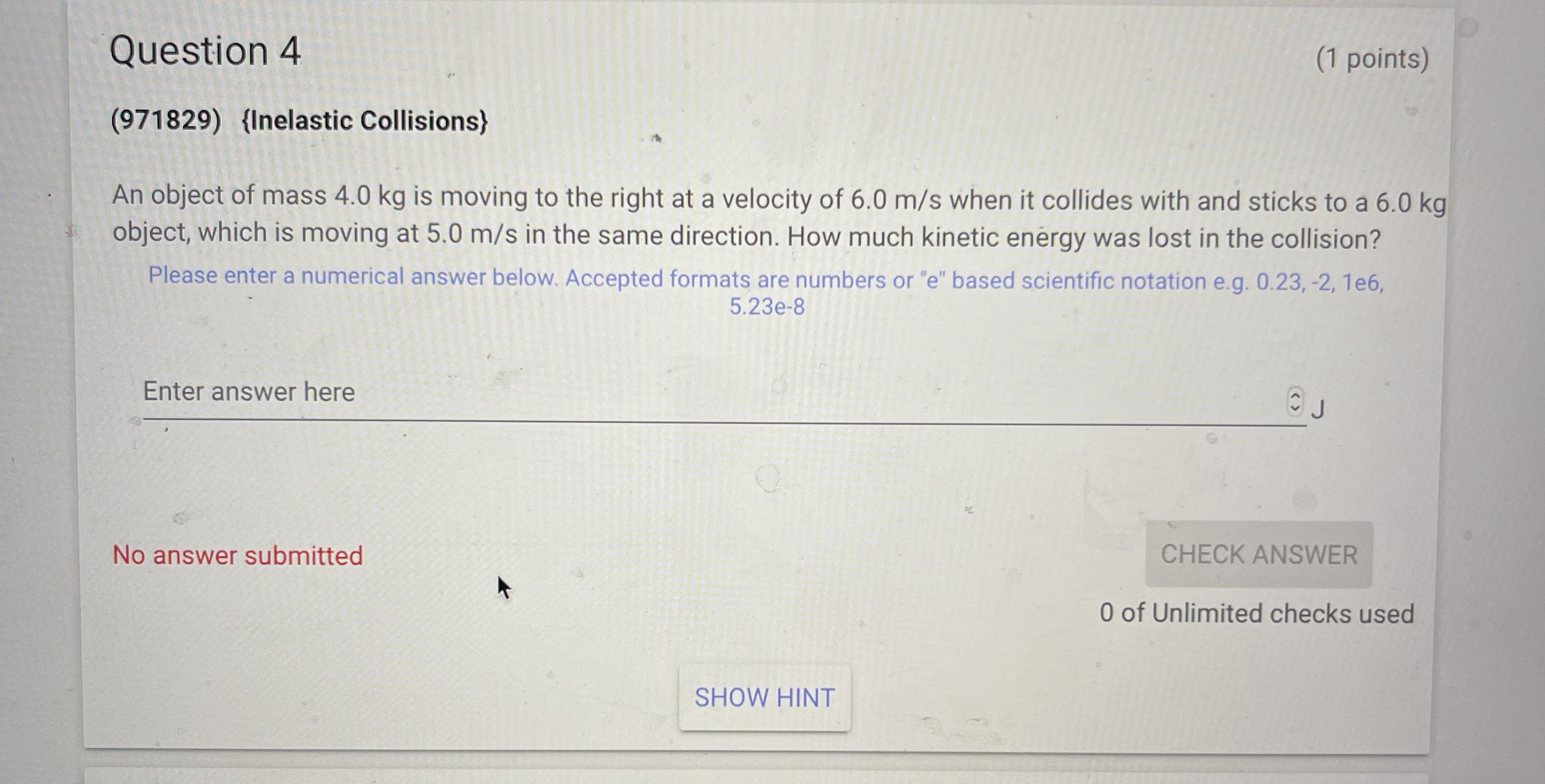
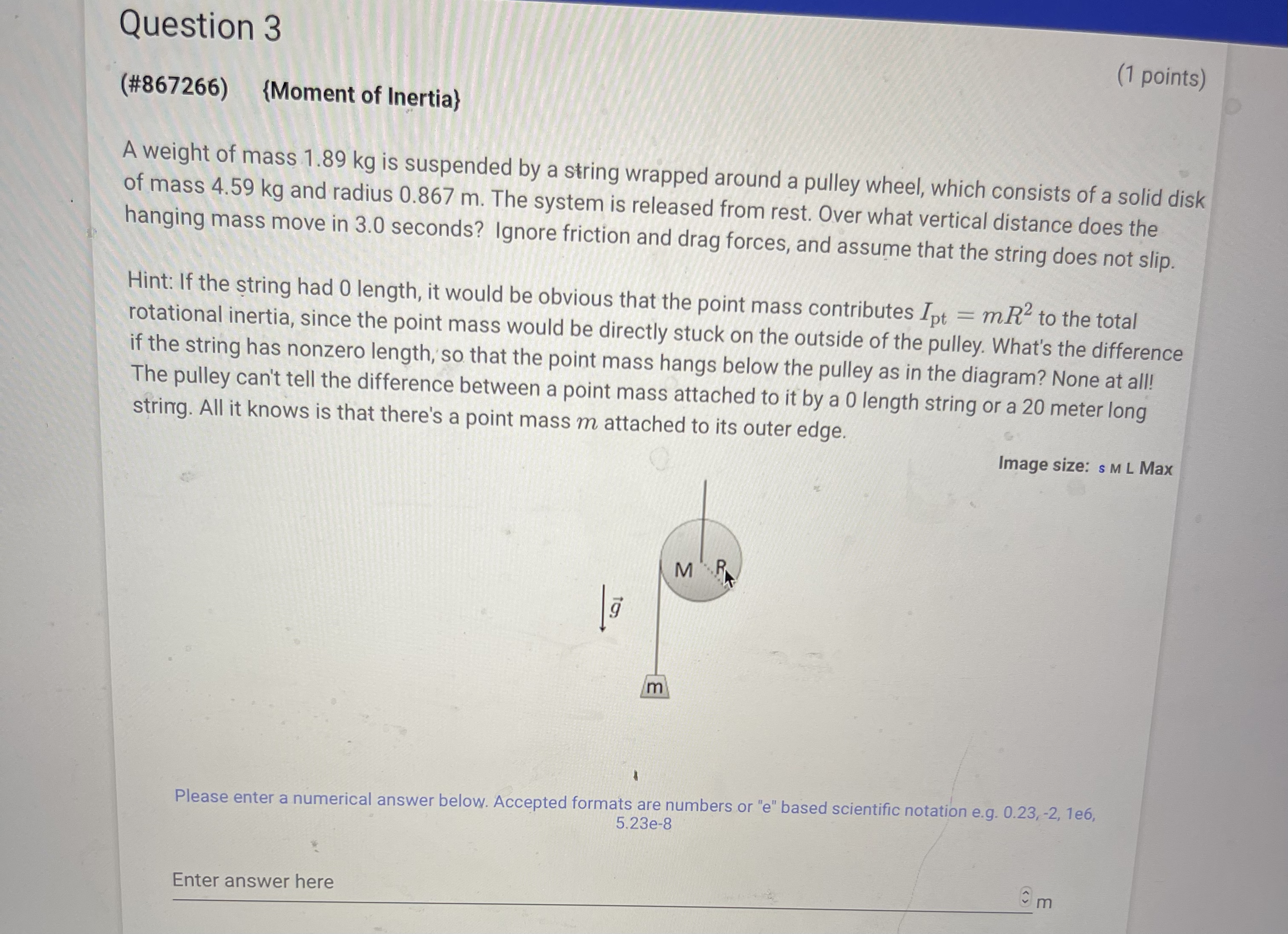
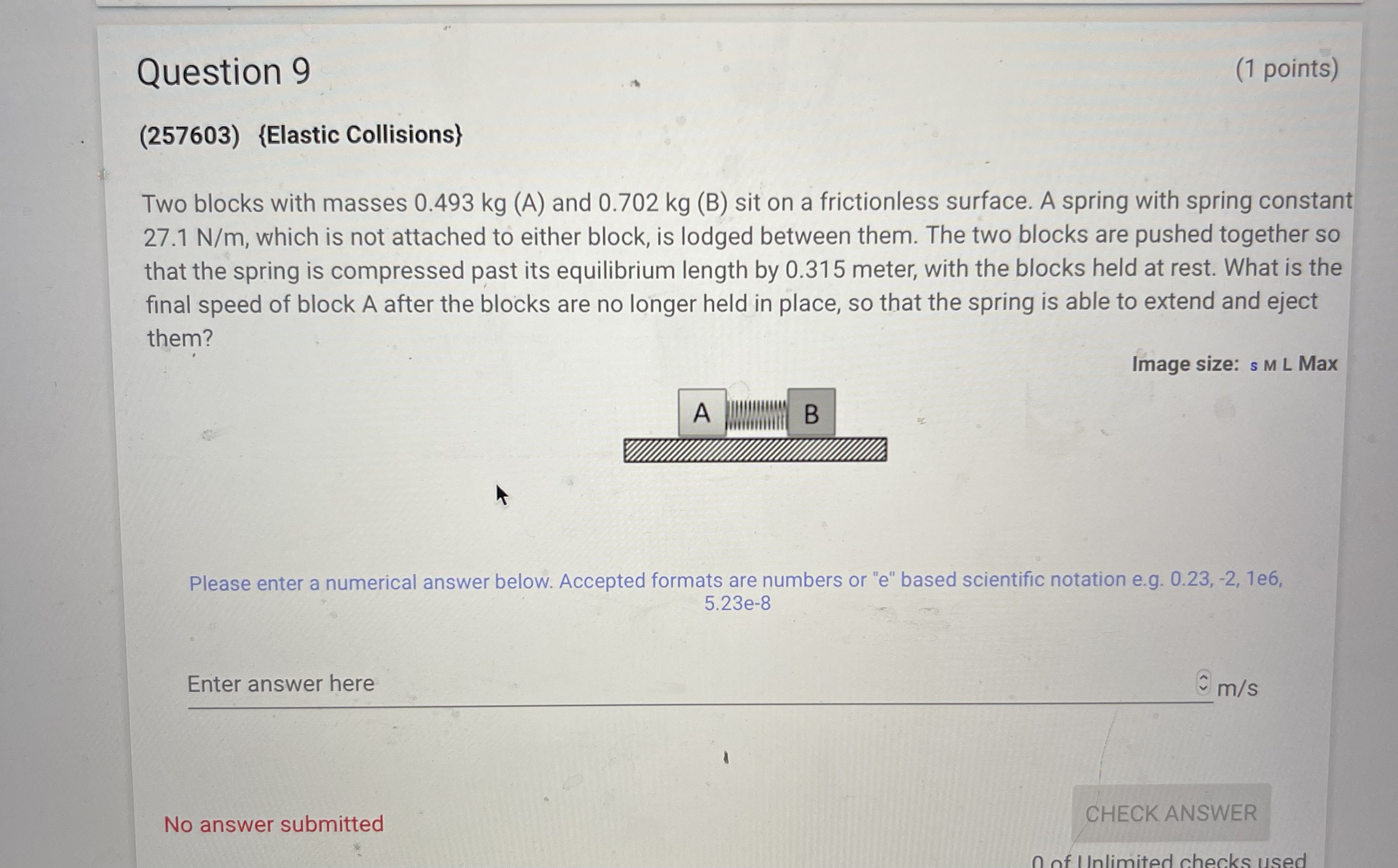
What is the rotational kinetic energy of a solid sphere of mass 8.33 kg and radius 0.30 m if it is rotating about its diameter at a constant rate of 3.75 rad sec Question 1 (#122289) {Torque} (1 points) What is the force required to produce 20 Nm torque at an angle of 60 on a 40 cm rod, pushing one end of the rod and keeping the other end fixed at the center of rotation? Please enter a numerical answer below. Accepted formats are numbers or "e" based scientific notation e.g. 0.23, -2, 1e6, Enter answer here I No answer submitted 5.23e-8 ON CHECK ANSWER 0 of Unlimited checks used mited checks used Question 6 (#418581) (Rotational Kinetic Energy} (1 points) What is the final velocity of a hoop that rolls without slipping down a 5.88-m-high hill, starting from rest? Please enter a numerical answer below. Accepted formats are numbers or "e" based scientific notation e.g. 0.23, -2, 1e6, 5.23e-8 Enter answer here No answer submitted m/s CHECK ANSWER Question 8 (1 points) (1441479) (Elastic Collisions} Two objects of masses 1 kg and 3 kg are held stationary on a frictionless surface with a compressed massless spring between them. When the blocks are released, the 1 kg object moves to the left with velocity 9 m/s. What is the velocity with which the 3kg object moves to the right? Please enter a numerical answer below. Accepted formats are numbers or "e" based scientific notation e.g. 0.23, -2, 1e6, Enter answer here No answer submitted 5.23e-8 m/s CHECK ANSWER 0 of Unlimited checks used Question 2 (#796015) (1 points) {Moment of Inertia} Suppose you exert a force of 245 N tangential to a grindstone (a solid disk) with a radius of 0.290 m and a mass of 94.3 kg What is the resulting angular acceleration of the grindstone assuming negligible opposing friction? Image size: S M L Max F Please enter a numerical answer below. Accepted formats are numbers or "e" based scientific notation e.g. 0.23, -2, 1e6, 5.23e-8 Enter answer here No answer submitted L radians/second CHECK ANSWER 0 of Unlimited checks used Question 3 (1 points) (908963) {Inelastic Collisions} Suppose two loaded train cars are moving toward one another, the first having a mass of 1.50 x 105 kg and a velocity of (0.30 ), and the second having a mass of 1.10 105 kg and a velocity of (-0.12 ). If the cars couple together on impact, what is their final velocity? V = (0.30 m/s) V = -(0.12 m/s) Image size: S M L Max I Please enter a numerical answer below. Accepted formats are numbers or "e" based scientific notation e.g. 0.23, -2, 1e6, 5.23e-8 Enter answer here No answer submitted Contents SHOW HINT Back 20 < > CHECK ANSWER 0 of Unlimited checks used Scroll To Top 2 of Unlimited checks used Question 11 (1 points) An asteroid passes by the Earth with momentum vector p= (1.08 x 1022, -3.50 x 1023, 0) kg-m/s. What is the magnitude of its angular momentum with respect to the Earth if the vector pointing from the center of the Earth to the asteroid's location is r= (8.20 x 108, 0, 0) m? Please enter a numerical answer below. Accepted formats are numbers or "e" based scientific notation e.g. 0.23, -2, 1e6, Enter answer here No answer submitted 5.23e-8 J-s CHECK ANSWER Question 4 (1 points) (971829) (Inelastic Collisions} An object of mass 4.0 kg is moving to the right at a velocity of 6.0 m/s when it collides with and sticks to a 6.0 kg object, which is moving at 5.0 m/s in the same direction. How much kinetic energy was lost in the collision? Please enter a numerical answer below. Accepted formats are numbers or "e" based scientific notation e.g. 0.23, -2, 1e6, 5.23e-8 Enter answer here No answer submitted SHOW HINT 20 CHECK ANSWER 0 of Unlimited checks used Question 3 (#867266) {Moment of Inertia} (1 points) A weight of mass 1.89 kg is suspended by a string wrapped around a pulley wheel, which consists of a solid disk of mass 4.59 kg and radius 0.867 m. The system is released from rest. Over what vertical distance does the hanging mass move in 3.0 seconds? Ignore friction and drag forces, and assume that the string does not slip. Hint: If the string had 0 length, it would be obvious that the point mass contributes Ipt = mR to the total rotational inertia, since the point mass would be directly stuck on the outside of the pulley. What's the difference if the string has nonzero length, so that the point mass hangs below the pulley as in the diagram? None at all! The pulley can't tell the difference between a point mass attached to it by a 0 length string or a 20 meter long string. All it knows is that there's a point mass m attached to its outer edge. TO m MR Image size: S M L Max Please enter a numerical answer below. Accepted formats are numbers or "e" based scientific notation e.g. 0.23, -2, 1e6, Enter answer here 5.23e-8 @m E Question 9 (1 points) (257603) (Elastic Collisions} Two blocks with masses 0.493 kg (A) and 0.702 kg (B) sit on a frictionless surface. A spring with spring constant 27.1 N/m, which is not attached to either block, is lodged between them. The two blocks are pushed together so that the spring is compressed past its equilibrium length by 0.315 meter, with the blocks held at rest. What is the final speed of block A after the blocks are no longer held in place, so that the spring is able to extend and eject them? A B Image size: S M L Max Please enter a numerical answer below. Accepted formats are numbers or "e" based scientific notation e.g. 0.23, -2, 1e6, Enter answer here No answer submitted 5.23e-8 m/s CHECK ANSWER 0 of Unlimited checks used
Step by Step Solution
There are 3 Steps involved in it
Step: 1

Get Instant Access to Expert-Tailored Solutions
See step-by-step solutions with expert insights and AI powered tools for academic success
Step: 2

Step: 3

Ace Your Homework with AI
Get the answers you need in no time with our AI-driven, step-by-step assistance
Get Started


